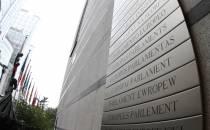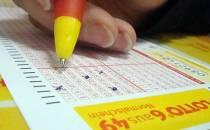Jahrestag der Terroranschläge vom 11. September 2001. Was waren damals die Hintergründe der berühmt-berüchtigten Put-Optionen?
Der nachfolgende Text ist ein Ausschnitt aus der Buchbesprechung: “Ground Zero Revisited - Motiv: Peak Oil“, abrufbar unter diesem Link:www.chaostheorien.de
Hierbei geht es um die Insider-Put-Optionen, die rund um den 11. September 2001 auftraten, und eine Software, die dabei zum Einsatz kam: PROMIS (Prosecutor's Management Information System).
Doch zunächst hier ein Video mit jemanden, der uns unten noch mehr zu dem Insiderhandel erzählt: der ehemalige Optionshändler Max Keiser. Keiser sagt: “9/11 bankers were financial mercenaries not worthy of pity.“
PROMIS ist eine Software, die
a) den weltweiten Börsenhandel in Echt-Zeit zu verfolgen in der Lage ist,
b) Computer- und Kommunikationssysteme infiltrieren kann, ohne bemerkt zu werden,
und die
c) Daten zu manipulieren versteht.
Punkt a) ist u. a. relevant ist für alles, das in den Bereich der niemals gänzlich aufgeklärten bzw. zurückverfolgten “Put-Options“ fällt[76], die unmittelbar vor dem 11. September getätigt wurden und von denen der ehemalige Bundesbankchef Ernst Weltke sagte, dass sie “...could not have been planned and carried out without a certain knowledge“[77]. Zu den Put-Optionen befragte ich – im August 2010 - Max Keiser, der jahrelang an der Wall Street als Aktien- und Optionshändler gearbeitet hat. Keiser, der Gründer von HSX/Hollywood Stock Exchange, kehrte in diesem Kontext zunächst einmal hervor, dass “...I was chatting with many brokers in the towers at around that time“, und sagte dann:
“There are many angles regarding option trades not yet revealed. I also worked at Alex Brown & Sons. Deutsche Bank bought Alex Brown & Sons in 1999. When the attacks occurred, DB owned ABS. An important person at ABS was Buzzy Krongard. I met him several times in the offices in Baltimore. Krongard had moved over to be Deputy Director of the CIA. The option trades, in which ABS was involved, occurred in ABS's Baltimore office. The buzz between Baltimore, Langley, and NYC, as you can imagine, was interesting to say the least.“
Mit seinem Hintergrund als früherer Optionshändler erläuterte Keiser anhand einer Erklärung, die ich unter “Profits of Death“ auf “From the Wilderness“ dazu fand:
“Put options, when used speculatively, are basically bets that specific stock prices will fall abruptly. The buyer having entered into a time-specific contract with a seller does not need to hold the shares at the time the contract is purchased. If a holder of the put options has a contract to sell a stock for $ 150 a share on Monday and the stock falls to $ 100 on Thursday, he can sell the options on Thursday and make several hundred percent or more on their money.“
Wichtig ist, laut Keiser, zu beachten, dass:
“...the OCC Options Clearing Corperation has an obligation to clear the transaction – and does so rather on an annonymous basis – whereas the bank handling the transaction as a broker can determine the identities of both parties.“
Den Fall rund um Buzzy Krongard, Alex Brown & Sons und dem CIA schildert Ruppert in “Crossing the Rubicon“ in gebührender Länge. Online veröffentlichte “From the Wilderness“ u. a. dazu:
“FTW (…) revealed that the A.B. Brown (Alex Brown) investment arm of the banking giant Deutschebank had been headed until 1998 by the man who is now the Executive Director of the Central Intelligence Agency - A.B. "Buzzy" Krongard. In fact, Krongard is but one name in a long history of CIA interconnections to stock trading and the world's financial markets. We also discussed, in detail, the evidence indicating that the CIA and other intelligence agencies monitor stock trading in real time for the purpose of identifying potential attacks of any nature that might damage the U.S. Economy.“Diese Geschichte kann weitergehender hier nachgelesen werden:www.fromthewilderness.com/
Max Keiser schätzt die Sache, die hier im Raume steht, generell wie folgt ein:
“My thought is that many (not all) who died on 9/11 were financial mercenaries - and we should feel the same about them as we do about any mercenaries that get killed. The tragedy is that these firms mixed civilians in with mercenaries and they too got killed. So were firms working on Wall St. using civilians as human shields perhaps?“
Des Weiteren machte mich Keiser auf einen Film aufmerksam, an dem er derzeit arbeitet, der mit einem besonderen Fall der aufgetretenen Put-Optionen zu tun hat:
“My film 'Broker Zero' tries to pinpoint the exact name/names of the brokers who were speculating on their own death that day and won (they made money, and died simultaneously)! It's an interesting story about the rise of suicide brokers on Wall St. no less dangerous than suicide bombers anywhere else. This is the project's synopsis: Evidence suggests that at least one broker working in the WTC on 9/11 was trading on inside information and that the profit motive was greater than the survival instinct. Several million dollars in profits were never collected from Alex. Brown & Sons; the result of a right bet that paid off in death. For further information see: www.piratemyfilm.com/projects/60.“
Zu den Berichten, die “Crossing the Rubicon“/“From the Wilderness“ aufführen, gehört u. a. diese Auflistung:
“A September 21 story by the Israeli Herzliyya International Policy Institute for Counterterrorism, entitled "Black Tuesday: The World's Largest Insider Trading Scam?" documented the following trades connected to the September 11 attacks:
- Between September 6 and 7, the Chicago Board Options Exchange saw purchases of 4,744 put options on United Airlines, but only 396 call options. Assuming that 4,000 of the options were bought by people with advance knowledge of the imminent attacks, these "insiders" would have profited by almost $5 million.
- On September 10, 4,516 put options on American Airlines were bought on the Chicago exchange, compared to only 748 calls. Again, there was no news at that point to justify this imbalance; Again, assuming that 4,000 of these options trades represent "insiders," they would represent a gain of about $4 million.
- [The levels of put options purchased above were more than six times higher than normal.]
- No similar trading in other airlines occurred on the Chicago exchange in the days immediately preceding Black Tuesday.
- Morgan Stanley Dean Witter & Co., which occupied 22 floors of the World Trade Center, saw 2,157 of its October $45 put options bought in the three trading days before Black Tuesday; this compares to an average of 27 contracts per day before September 6. Morgan Stanley's share price fell from $48.90 to $42.50 in the aftermath of the attacks. Assuming that 2,000 of these options contracts were bought based upon knowledge of the approaching attacks, their purchasers could have profited by at least $1.2 million.
- Merrill Lynch & Co., with headquarters near the Twin Towers, saw 12,215 October $45 put options bought in the four trading days before the attacks; the previous average volume in those shares had been 252 contracts per day [a 1200% increase!]. When trading resumed, Merrill's shares fell from $46.88 to $41.50; assuming that 11,000 option contracts were bought by "insiders," their profit would have been about $5.5 million.
- European regulators are examining trades in Germany's Munich Re, Switzerland's Swiss Re, and AXA of France, all major reinsurers with exposure to the Black Tuesday disaster. [FTW Note: AXA also owns more than 25% of American Airlines stock making the attacks a "double whammy" for them.]
Link “Profits of Death“:www.fromthewilderness.com










